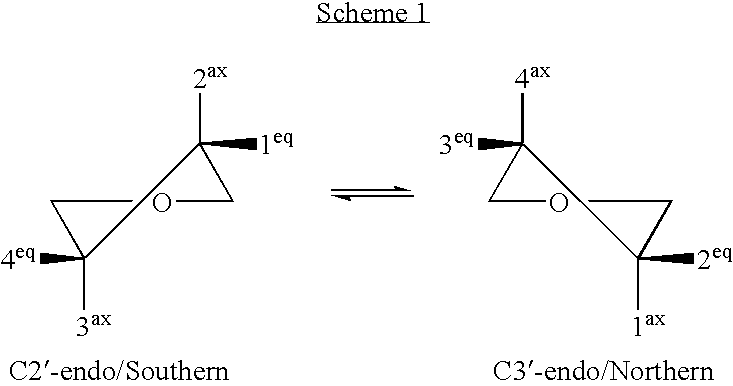Microrna as ligands and target molecules
a microrna and target molecule technology, applied in the field of mass spectrometry methods, can solve the problems of reducing the activity of rnai, morpholino oligomers showing activity but not as effective as dsrna, and affecting drug discovery and optimization, so as to improve the binding properties, improve the binding affinity, and improve the effect of binding properties
- Summary
- Abstract
- Description
- Claims
- Application Information
AI Technical Summary
Benefits of technology
Problems solved by technology
Method used
Image
Examples
example 1
Mass Spectrometry-Based Selection of Compounds with Affinity for RNA
[0673] RNA binding ligands are selected from a set of compounds using mass spectrometry. The RNA used for the target molecule is an RNA whose electrospray ionization properties have been optimized in conjunction with optimization of the electrospray ionization and desolvation conditions. A set of compounds that contains members with molecular mass less than 200, 3 or fewer rotatable bonds, no more than one sulfur, phosphorous, or halogen atom, and at least 20 mM solubility in dimethylsulfoxide is used. A 50 μM stock solution of the RNA is purified, and dialyzed to remove sodium and potassium ions.
[0674] The compound set is pooled into mixtures of 8 members, each present at 1-10 mM in DMSO. A collection of these mixtures is diluted 1:50 into an aqueous solution containing 50-150 mM ammonium acetate buffer at pH 7.0, 1-5 μM RNA target, and 10-50% isopropanol, ethanol, or methanol to create the screening sample. The ...
example 2
Chemical Optimization of Compounds that Form Complexes with the RNA Target
[0678] In a second step, compounds are obtained with structures derived from those selected in Example 1. These compounds may be simple derivatives with additional methyl, amino, or hydroxyl groups, or derivatives where the composition and size of rings and side chains have been varied. These derivatives are screened as in Example 1 to obtain SAR information and to optimize the binding affinity with the RNA target.
example 3
Determination of the Mode of Binding for Compounds Forming Complexes with the RNA Target
[0679] In the compound collection used in Example 1, those compounds that formed complexes with the RNA target are pooled into groups of 4-10 and screened again as a mixture against the RNA target as outlined in Example 1. Since all of the compounds have been shown previously to bind to the RNA, three possible changes in the relative ion abundance are observed in the mass spectrometry assay. If two compounds bind at the same site, the ion abundance of the RNA complex for the weaker binder will be decreased through competition for RNA binding with the higher affinity binder (competitive binding). An example is presented in FIG. 3, where the ion abundance from a glucosamine-RNA complex is reduced as glucosamine is displaced from the RNA by addition of a benzimidazole compound. If two compounds can bind at distinct sites, signals will be observed from the respective binary complexes with the RNA an...
PUM
| Property | Measurement | Unit |
|---|---|---|
| dissociation constant | aaaaa | aaaaa |
| molecular mass | aaaaa | aaaaa |
| molecular mass | aaaaa | aaaaa |
Abstract
Description
Claims
Application Information
 Login to View More
Login to View More - R&D
- Intellectual Property
- Life Sciences
- Materials
- Tech Scout
- Unparalleled Data Quality
- Higher Quality Content
- 60% Fewer Hallucinations
Browse by: Latest US Patents, China's latest patents, Technical Efficacy Thesaurus, Application Domain, Technology Topic, Popular Technical Reports.
© 2025 PatSnap. All rights reserved.Legal|Privacy policy|Modern Slavery Act Transparency Statement|Sitemap|About US| Contact US: help@patsnap.com



